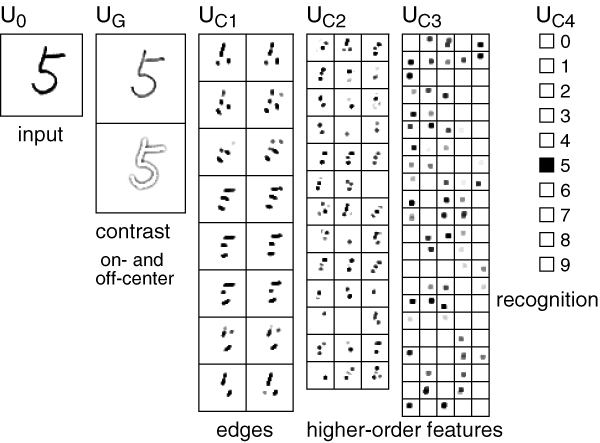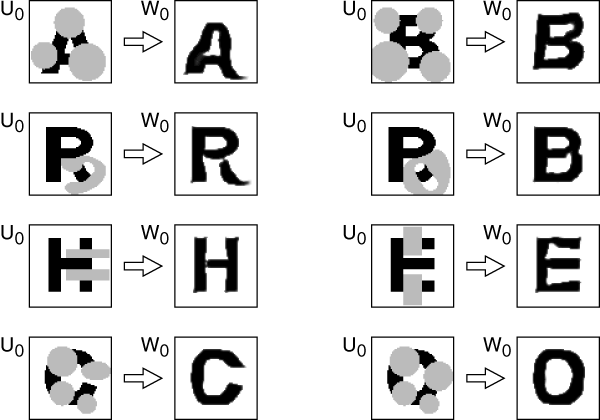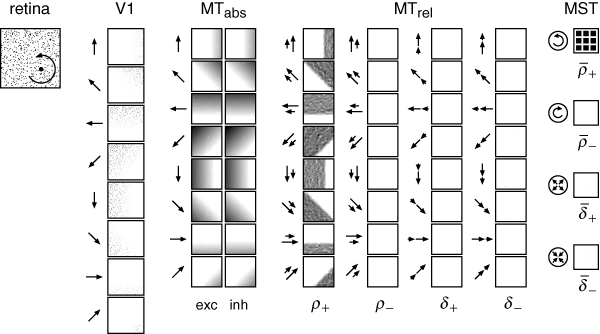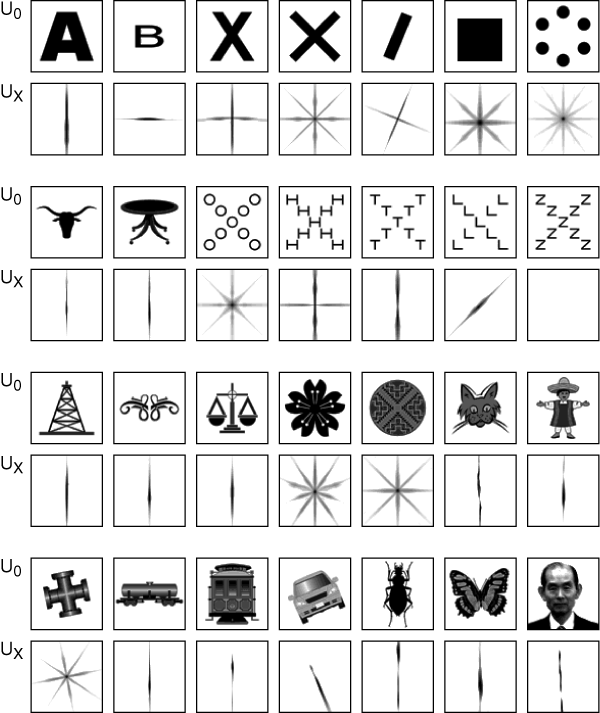Visual Pattern Recognition by the Neocognitron
The neocognitron is a neural network model proposed by Fukushima in 1979. Its architecture was suggested by neurophysiological findings on the visual systems (classical hierarchy-hypothesis by Hubel and Wiesel). It acquires an ability to robustly recognize visual patterns through learning.
To improve the recognition rate of the neocognitron and to make it closer to the biological visual system, several modifications have been applied. An improved version of the neocognitron, for example, shows a recognition rate of more than 99.7% for unlearned blind test patterns sampled randomly from a large database (ETL1) of handwritten digits.
 |
Reference
-
K. Fukushima:
"Neocognitron: A self-organizing neural network model for a mechanism of pattern recognition unaffected by shift in position",
Biological Cybernetics, 36[4], pp. 193-202 (April 1980).
http://dx.doi.org/10.1007/BF00344251 -
K. Fukushima:
"Artificial vision by multi-layered neural networks: neocognitron and its advances",
Neural Networks, 37, pp. 103-119 (Jan. 2013).
http://dx.doi.org/10.1016/j.neunet.2012.09.016
Top of Fukushima | Neocognitron | Occluded pattern | Optic flow | Symmetry |


